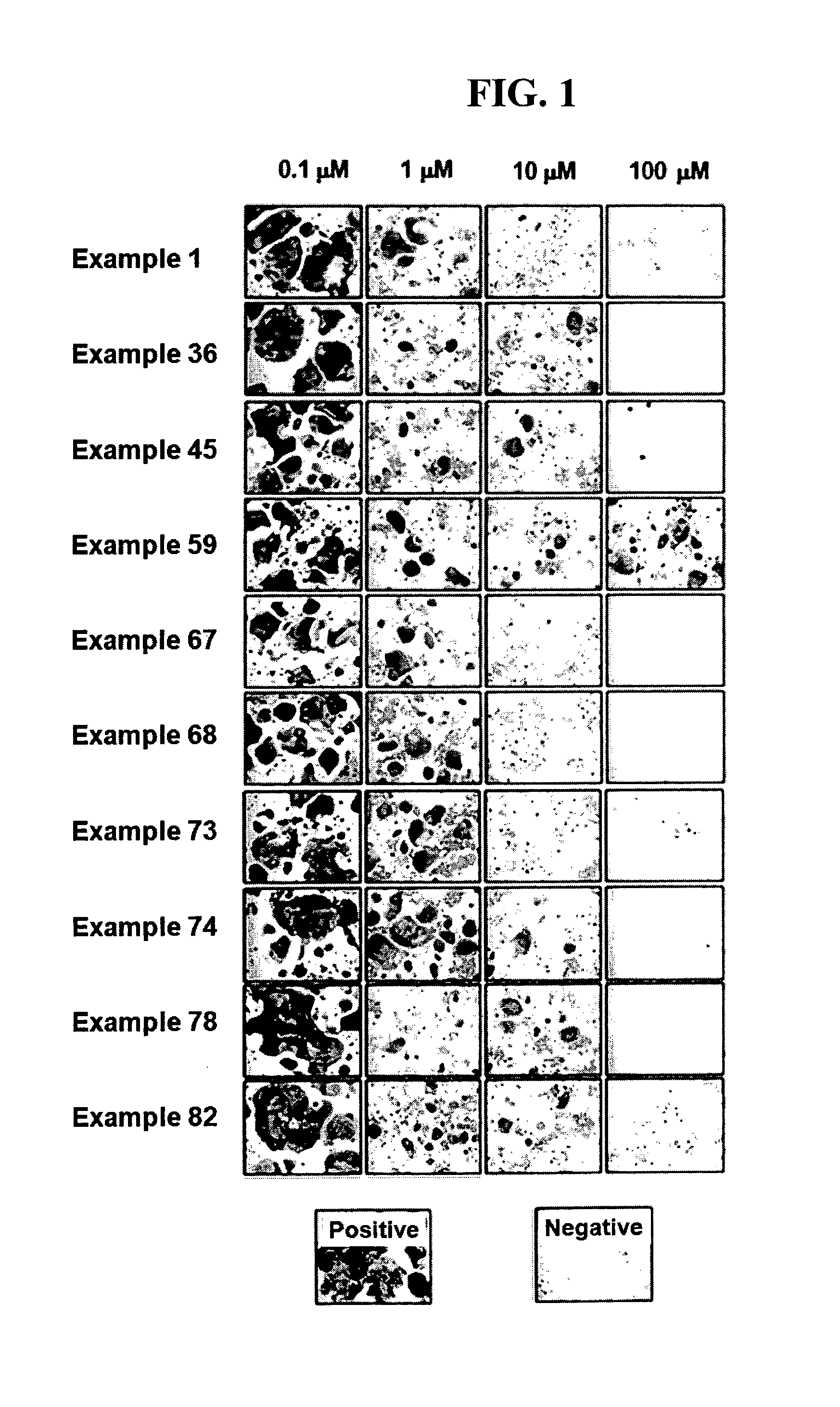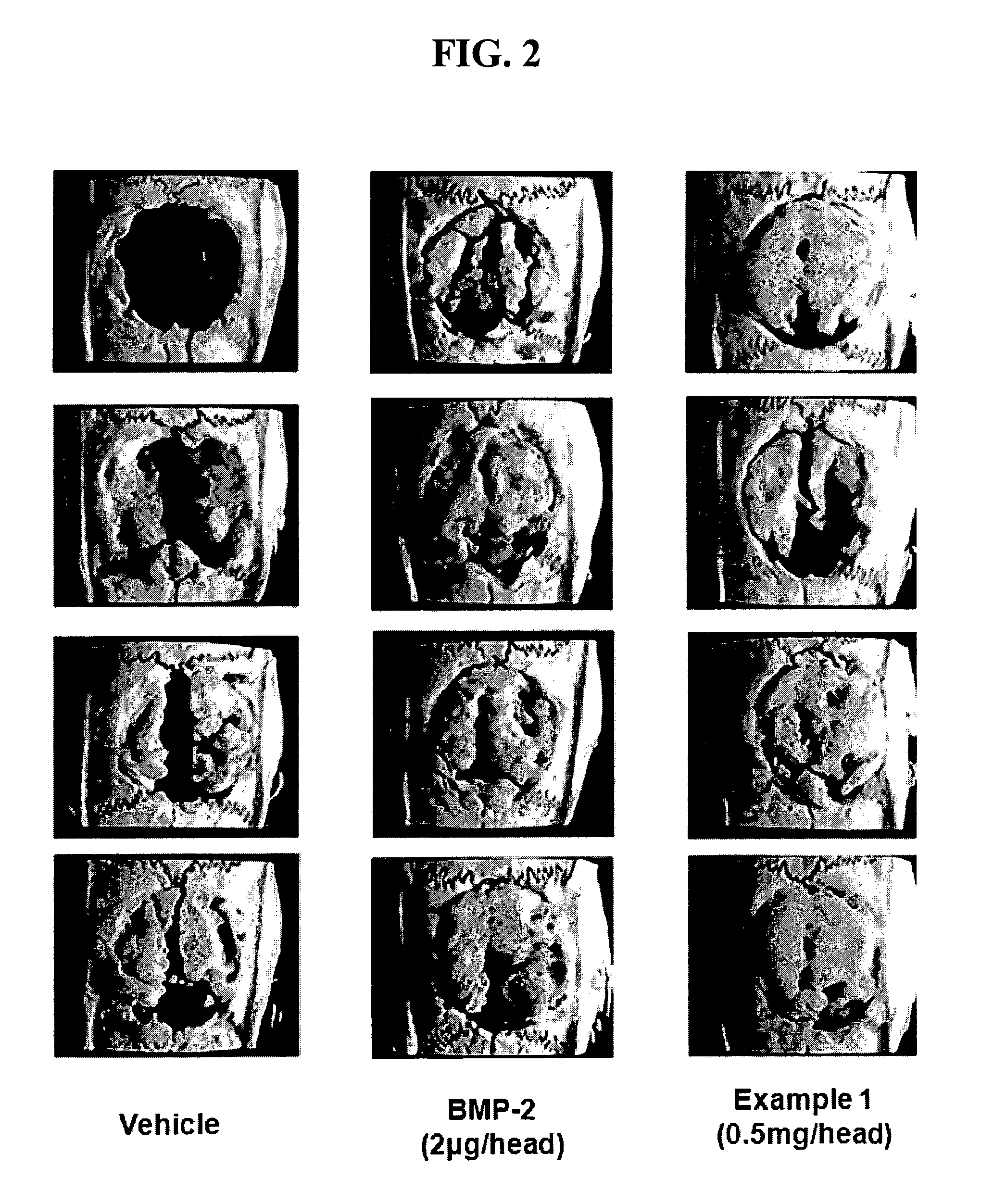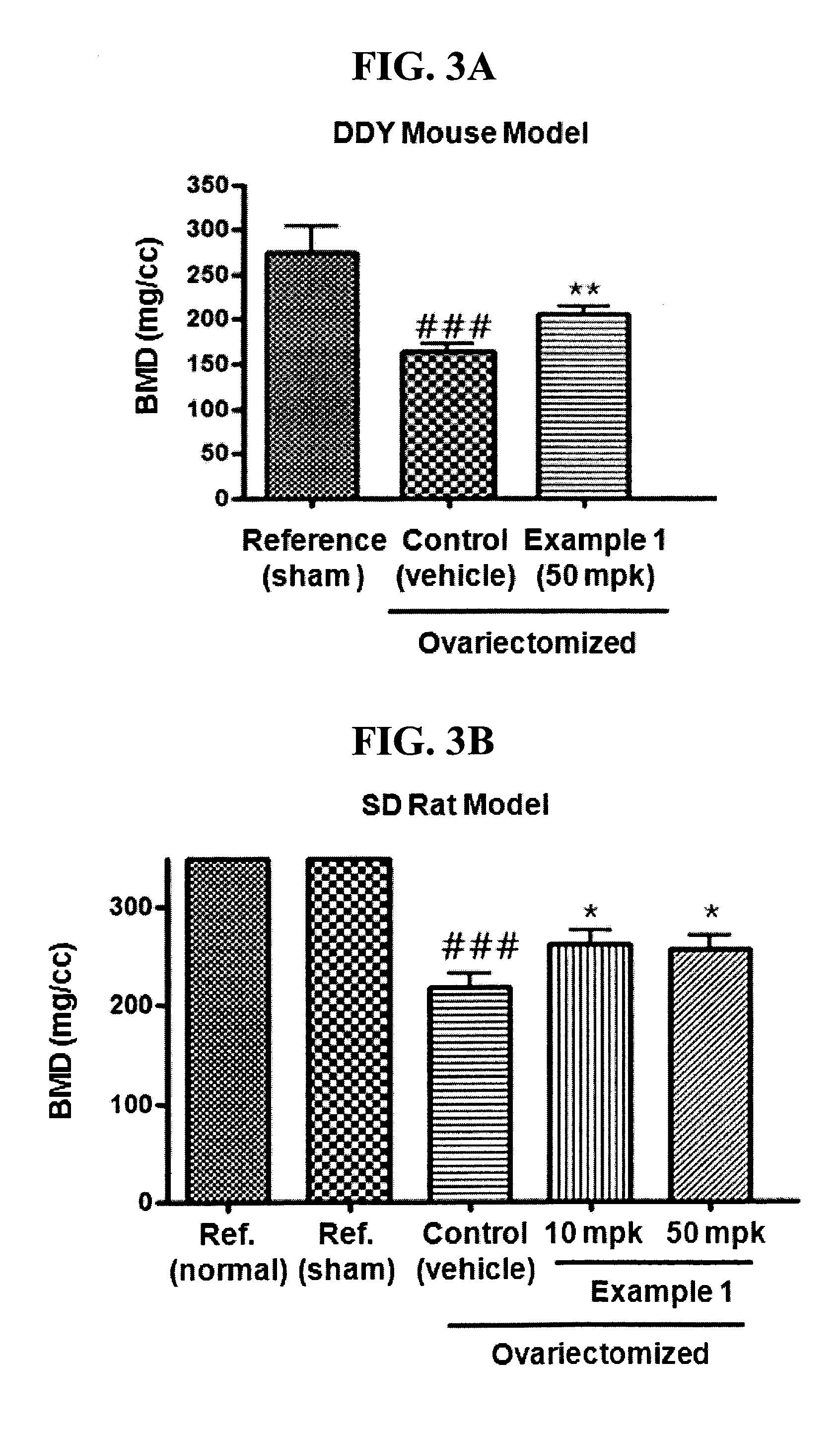Indenone derivative and pharmaceutical composition comprising same
a technology of indenone and derivatives, applied in the direction of drug compositions, heterocyclic compound active ingredients, organic chemistry, etc., can solve the problems of increased risk of bone fracture, inability to achieve balance, and weakening of bone strength, so as to inhibit bone resorption and increase the activity of osteoblastic cells
- Summary
- Abstract
- Description
- Claims
- Application Information
AI Technical Summary
Benefits of technology
Problems solved by technology
Method used
Image
Examples
example 1
Synthesis of 6-(2-morpholinoethoxy)-3-phenyl-2-(pyridin-3-yl)-1H-inden-1-one hydrochloride salt
Step 1. (E)-1-(3-Hydroxyphenyl)-3-phenylprop-2-en-1-one
[0261]
[0262]A 250 mL round-bottomed flask was charged sequentially aq. NaOH solution (NaOH 7.1 g / H2O 50 mL) and EtOH (40 mL). The solution was maintained below 10° C. in an ice bath. 1-(3-hydroxyphenyl)ethanone (20.0 g, 147 mmol) was added and stirred for 30 min at 10° C. To the resulting mixture was then added benzaldehyde (15 mL, 1.0 eq). After being stirred for additional 1 h at 10° C., the reaction mixture was stirred at room temperature for further 26 h. The solution was concentrated by rotary evaporation under reduced pressure. The residue was dissolved in EtOAc. The organic layer was washed with 3N HCl and H2O, dried over MgSO4, and concentrated in vacuo to obtain the desired product (32.5 g, 98%).
[0263]1H NMR (CDCl3, 300 MHz) δ 7.8 (d, J=15.7 Hz, 1H), 7.7 (m, 2H), 7.6 (m, 1H), 7.6 (m, 1H), 7.5 (d, J=18.7 Hz, 1H), 7.4 (m, 3H), 7...
example 2
Synthesis of 6-(2-morpholinoethoxy)-2-(3-fluoro-4-methoxyphenyl)-3-phenyl-1H-inden-1-one
[0284]The procedure of Step 7 of Example 1 was repeated except for using 3-fluoro-4-methoxyphenylboronic acid instead of 3-pyridinylboronic acid to obtain the title compound (13%).
[0285]1H NMR (CDCl3, 300 MHz) δ 7.44-7.39 (3H, m), 7.37-7.36 (2H, m), 7.18 (1H, d, J=2.4 Hz), 7.04-6.96 (3H, m). 6.86 (1H, d, J=8.4 Hz), 6.80 (1H, dd, J=8.3 Hz, 2.6 Hz), 4.15 (2H, t, J=5.7 Hz), 3.86 (3H, s), 3.75 (4H, t, J=4.7 Hz), 2.82 (2H, t, J=5.7 Hz), 2.59 (4H, t, J=4.5 Hz)
example 3
Synthesis of 6-(2-morpholinoethoxy)-3-phenyl-2-(quinolin-3-yl)-1H-inden-1-one
[0286]The procedure of Step 7 of Example 1 was repeated except for using 3-quinolinylboronic acid instead of 3-pyridinylboronic acid and being recrystallized with EtOAc to obtain the title compound (75%).
[0287]1H NMR (CDCl3, 300 MHz) δ 8.54 (1H, d, J=2.1 Hz), 8.31 (1H, d, J=2.1 Hz), 8.00 (1H, d, J=8.4 Hz), 7.81 (1H, d, J=8.1 Hz). 7.68 (1H, dt, J=7.1 Hz, 1.3 Hz), 7.55 (1H, t, J=7.4 Hz), 7.44-7.40 (5H, m), 7.25 (1H, d, J=2.4 Hz), 7.11 (1H, d, J=8.1 Hz), 6.85 (1H, dd, J=8.1 Hz, 2.4 Hz), 4.19 (2H, t, J=5.6 Hz), 3.76 (4H, t, J=4.7 Hz), 2.84 (2H, t, J=5.6 Hz), 2.61 (2H, t, J=5.6 Hz)
PUM
| Property | Measurement | Unit |
|---|---|---|
| temperature | aaaaa | aaaaa |
| temperature | aaaaa | aaaaa |
| wt % | aaaaa | aaaaa |
Abstract
Description
Claims
Application Information
 Login to View More
Login to View More - R&D
- Intellectual Property
- Life Sciences
- Materials
- Tech Scout
- Unparalleled Data Quality
- Higher Quality Content
- 60% Fewer Hallucinations
Browse by: Latest US Patents, China's latest patents, Technical Efficacy Thesaurus, Application Domain, Technology Topic, Popular Technical Reports.
© 2025 PatSnap. All rights reserved.Legal|Privacy policy|Modern Slavery Act Transparency Statement|Sitemap|About US| Contact US: help@patsnap.com



